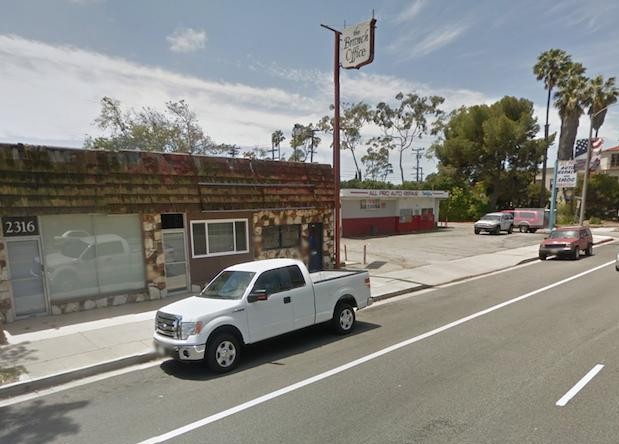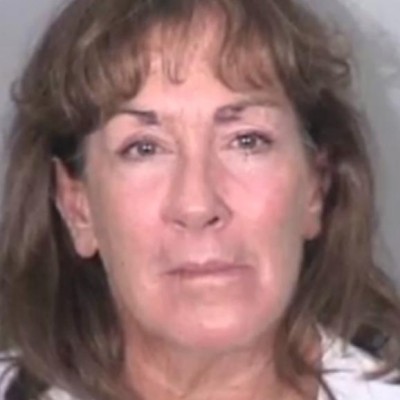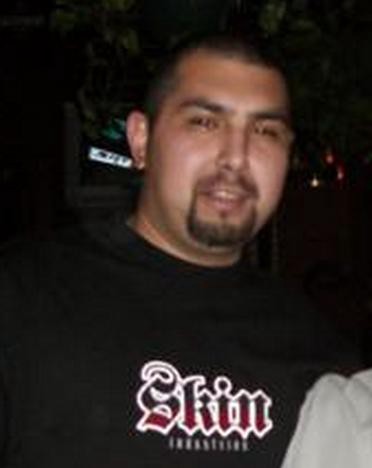The Dying Man On The Windshield
by Natasha Vargas-Cooper

Marco Salgado was plunking traffic cones down around a hit-and-run crime scene in November of 2012 when he noticed a shoe sitting by its lonesome on the crabgrass lawn of a nearby apartment complex. Salgado, a city worker for Torrance’s traffic department, asked an officer who owned the shoe. The shoe, the officer responded, belonged to a man who was found at a gas station two miles away, naked from the waist down and impaled on the windshield of a Mitsubishi. Salgado thought he recognized the shoe, chunky and strapped with fat laces, and asked if the officer knew the victim’s name. The officer did know the victim’s name, because the cops had found pants near the accident site that contained boxers and a wallet with ID.
The victim was Phillip Moreno, a 31-year old man who friends called Chud. He was in emergency surgery at the local trauma hospital by then. In an hour he would die from internal bleeding. Salgado knew the shoe, knew the name, because both belonged to his brother-in-law.
Who was driving the Mitsubishi?, Salgado asked. A woman named Sherri Lynn Wilkins, the officer said. Incredibly, Salgado knew her as well. Four weeks earlier, Salgado, “tired of being the family drunk,” checked himself into rehab for drinking. His counselor was a 51-year old woman, a former drunk and heroin addict who got clean in 2006, earned a degree from Loyola college in addiction treatment, became the manager of a sober-living house in Torrance and then was hired as drug and alcohol counselor at Twin Town Treatment Center.
“I couldn’t believe it,” Salgado testified on Monday in a downtown Los Angeles courtroom. “She was my my counselor.” He saw her six days a week and they talked about their shared history of addiction.
When Wilkins had pulled into the gas station with a pantless Moreno embedded in her windshield, her blood alcohol level was .17. That’s twice the legal limit. There were traces of THC and benzodiazepine in her bloodstream. When police searched her car they found two empty mini-bottles of Absolut Vodka and a 40-ouncer, along with a receipt that showed it’d been purchased that evening.
Wilkins sat expressionless in the courtroom in her pink canvas wheelchair as Salgado testified to these facts. The heavy lines of her face occasionally twitched into a grimace; her flat brown hair, streaked with grey wisps, was strung up in ponytail. Wilkins has two prior felony burglary charges on her record and now faces life in prison for vehicular manslaughter; she is what we in California call “a third striker.”
Several of Moreno’s family members — all dark haired, round-faced and Latino, some with their fleshy arms tattooed by faded spiderwebs and shooting stars — shook their heads and wiped away their tears during Salgado’s testimony.
Salgado told the jury about one evening session he had with Wilkins before the accident: “She said if she ever drank again she’d either be in jail or kill someone.” Now Wilkins was shaking her head.


Sherri Lynn Wilkins’ mugshot, by the Torrance Police Department.
On the night of the incident, Phillip Moreno started to walk home from the Branch Office bar after a few drinks with friends around 11 p.m. The friends said goodbye and saw him cross the street onto Madrid Boulevard.
It’s unclear how fast Wilkins was driving when she struck Moreno around 11:15 p.m., but it was fast enough, prosecutors argued, to blast Moreno’s shoes and pants off, hurling them them in different directions. Wilkins drove with Moreno lodged into her windshield for two miles. She passed a gas station, a local fire department, and, when she came to the intersection where she could have turned to take Moreno to the emergency room that was only a few minutes away, she turned the other direction, towards a long stretch of empty refineries and junkyards.
Wilkins made two calls on her cell during the ten minutes Moreno was impaled on her windshield; both were to her husband’s cell phone. Wilkins was spotted at a gas station while the Mitsubishi creeped down Crenshaw Boulevard. One witness would later tell police that it appeared as though Wilkins was jerking her steering wheel, trying, perhaps, to shake Moreno from her hood.
They tried to flag Wilkins down as she rolled into the gas station. The Mitsubishi was slow but not stopping. Three civilians got into two cars and boxed her in. Moreno was still alive. One of the civilians, a lifeguard, took a towel out of her car and put it underneath Moreno’s head. The others called the police and paramedics. Wilkins waited in the car in a daze.

There is a vein that connects the liver to the blood supply. Moreno’s vein was severed. The trauma surgeon who attempted pull Moreno back from death in the emergency room of Providence Little Company of Mary Hospital in Torrance testified in a preliminary hearing that this type of fatal injury can be fixed if it is treated in time. Doctors can clamp down on the vein, stem the bleeding and reattach it to the liver. It was argued that because Wilkins drove around with Moreno on her windshield instead of seeking assistance, Moreno had lost too much blood and could not be saved.
After Salgado learned his brother-in-law had been hit by Wilkins, he sped off to the hospital. The doctors told the family Moreno could not be saved, and so they went to the police department. Salgado filed a statement, repeating the recovery cliché observation that Wilkins had made to Salgado in their sessions: if she drank again she would be in jail or kill someone. The next morning, Salgado and his family appeared on Dr. Drew’s cable show and repeated the claim.

“This is not an issue of drinking and driving!” Nan Whitfield, Wilkins’ public defender, a short black woman in her 50s, clad in a emerald green skirt and blazer, declared during her opening statements. “This was a freak accident,” she said: “a half naked man jumped on my client’s car –for reasons he took with him — and she got freaked out.” Whitfield is considered a star public defender in Los Angeles County. She’s known for being tough and charismatic and for winning hard capital cases. After twenty-five years of public service, it is said she has never considered going into lucrative private practice. In the press, she’s described as an active church-goer, and she takes pride in defending the county’s indigent. In 2002, she was in talks to participate in a reality TV show about the public defender’s office.
Yes, Whitfield said, Wilkins had alcohol bottles in her car and booze in her bloodstream when the police breathalyzed her — but “it’s not how it seems.”

Wilkins’ story, as Whitfield tells it, is this. On the night in question, she had gone into Twin Town to finish some paperwork on the computers around 8 p.m. (Previously, her boss had told the press that she had not worked in the days prior to the incident.) Right before 11 p.m., while still in the parking lot, Wilkins downed the two small bottles of vodka. Just few minutes later — the treatment facility is just a few blocks from the Branch Office bar — a pantless Moreno jumped out of the darkness and onto the hood of Wilkin’s car.
“It is impossible” that Wilkins could have been drunk when her car struck Moreno’s because “there was not enough time for her body to metabolize the alcohol,” Whitfield argued. Furthermore, the THC in Wilkins’ system could have been lingering there from weeks before from the accident. The benzos, she said, were prescribed as treatment for Wilkin’s depression.
The cause of Moreno’s death had nothing to do with Wilkins cruising down Crenshaw with a man stuck her windshield, Whitfield said. It was the hospital who hastened Moreno’s demise through delays in the emergency room.
“My client has had a hard life. She was in a car accident when she was young and — “ an emphatic objection from the deputy district attorney, a quick sidebar with the judge, and Whitfield picked up again. Wilkins was in a car wreck in her early twenties. She was prescribed opiates for pain. The pain pills escalated into a devastating heroin addiction, but then, Whitfield said, “she caught a break,” cleaned herself up and tried to do good.
Moreno’s family began to tisk and murmur at each other during at the end of Whitfield’s salvo. “Don’t get too upset, she has to say that,” one of the younger female family members whispered to another. Indeed, somebody has to. The trial is expected to last three weeks.
Natasha Vargas-Cooper is a reporter in Los Angeles.
